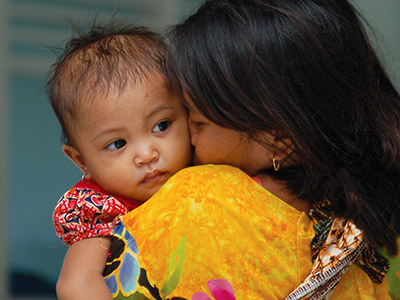This spring, University of Washington President Ana Mari Cauce invited the UW community and its partners in the Seattle area to develop a long-range vision for improving health and well-being across the planet.

“We have an opportunity to help people live longer, healthier, more productive lives—here and around the world,” Cauce said in an address to representatives from the University, PATH, the Bill & Melinda Gates Foundation and other global health organizations. The plan to create a long-term vision would start with the formation of a new Population Health Leadership Council that would develop an initial set of recommendations by January 2017, followed by a full 25-year vision and action plan.
The council would consist of deans in the health sciences and members of other colleges and schools at the UW. An external advisory board will be essential to the process, she said. The UW could create new degrees in population health as well as new paths to encourage students to investigate population health-related questions, Cauce said.
“This phenomenal opportunity will allow SPH to 'up its game' in protecting population health, from the local to the global,” said Howard Frumkin, dean of the School of Public Health. “I’m especially excited that it will facilitate partnerships across campus, linking the health sciences with engineering, business, law, policy, social sciences, the built and natural environments, and more.”
Frumkin added, “A university as large and diverse as ours is perfectly positioned to advance health and well-being—from understanding upstream causes all the way to designing and testing effective, innovative solutions.”
Cauce said the population health effort would build upon the University’s ongoing interdisciplinary, data-driven approach. Key players in the initiative will be SPH and UW Medicine, including the Department of Global Health and the Institute for Health Metrics and Evaluation (IHME).
Cauce identified opportunities in five key areas:
• Education and capacity building
• Diagnostics and critical assessment
• Developing and testing innovations
• Implementation sciences
• Strategy and planning
During her address, Cauce gave a shoutout to ongoing efforts to improve health. She touted research from the School and Fred Hutch—led by Lu Chen (PhD 2016, Epidemiology) and Christopher Li (PhD 2003 and MPH 2000, Epidemiology)—on disparities in breast cancer treatment and diagnosis. “What they found confirms the shameful existence of inequity in detection and treatment,” Cauce said. “Women of color were up to four times more likely to be diagnosed with cancer in its late stages, and they were at much higher risk of not receiving the recommended treatment at all.”
The UW president also highlighted IHME’s data collection and analyses that drive health policies around the globe. And she noted that the Department of Global Health has projects in 138 countries—one of those efforts uses modern text messaging to help new and expectant mothers care for their babies.
The ultimate goal of the population health initiative is to reduce health disparities, tackle the challenges of sustainability, and inspire the next generation of decision-makers. “Our aspiration is nothing less than to change the world,” Cauce said.
See her speech and a timeline of "next steps:" www.washington.edu/president/populationhealth
